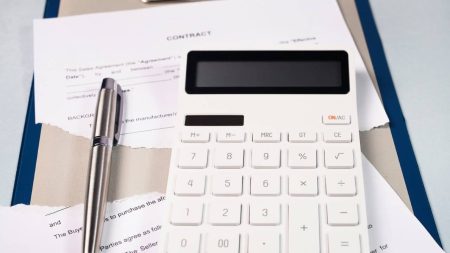Key takeaways
- A student loan settlement helps you pay off your student loans in one lump sum for less than the amount you owe.
- Your loans must be in default, meaning you have failed to make multiple payments, to be eligible for student loan settlement.
- Student loan settlements can negatively impact your credit score, so consider alternatives like deferment, forbearance or refinancing first.
Individual borrowers carry an average federal student loan debt balance of $37,853. When private student loans are added to the equation, the average increases to $40,681.
Despite these high numbers, student loan payments might not be your top priority. Housing costs, utility bills, transportation expenses and groceries might demand more urgent attention. But those student loans still have to be addressed to avoid serious financial penalties like late fees and marks against your credit score.
If you’re having trouble making student loan payments, it’s worth considering options for managing this debt. One such option is student loan debt settlement.
What student loan settlement is
Student loan settlement is when you make a lump-sum payment to close out your student loans for less than the amount you owe. If your student loans are in default, your lender might be willing to accept less than the full amount rather than take the risk that you will stop paying entirely.
However, you usually need to offer a large lump-sum payment to incentivize your lender to accept less than the full amount.
For example, if you have $30,000 in student loans, you might offer to pay $25,000 now if the lender will forgive the remaining $5,000. This would settle the debt for far less than you owe, but you would need the cash to make such an offer.
The amount of debt that can be forgiven varies by lender. Not all student loan lenders are willing to entertain settlement offers.
You might want to consider a student loan settlement if:
- Your loans are in default (or near it).
- Your loans have been sent to collections.
- Your credit is already damaged.
- The alternative is a court judgment.
- You have access to cash that can be a lump-sum payment to settle your outstanding debt.
How to be eligible for student loan settlement
You might qualify for federal student loan debt settlement if:
- You can’t afford the loan. You must prove you don’t make enough money to repay your loan. This typically requires submitting pay stubs or recent tax returns as proof of income. You may also need proof of your other expenses (like recurring bills, bank statements and a lease agreement) to explain where your income is going.
- You haven’t paid your loans in almost a year. Most federal student loan servicers consider your loans in default after you’ve failed to make payments for 270 consecutive days, while private student loans are often considered in default after 120 days.
- You’ve re-defaulted. If you’ve defaulted on the same loan more than once, settlement may be a last resort for getting out of debt.
Steps to negotiating student loan settlements
Can you negotiate a student loan payoff? Yes. But before you begin negotiating, your loans will probably need to be either in default or near default. Some lenders may suggest an alternative repayment plan before entertaining settlement offers.
If you have explored other options and found that a settlement is your best bet, you can take the following steps to negotiate a student loan settlement.
1. Gather required documentation
When seeking a student loan settlement, present evidence that your financial situation prevents you from paying the amount owed. Gather any documentation that might serve to show the hardship you are experiencing.
This documentation might include:
- Bank statements
- Childcare expenses
- Credit card statements
- Medical bills
- Paystubs
- Rent or mortgage payments
- Tax returns
2. Know your options
Your student loan settlement options depend on your lender. Some lenders require you to pay at least 90 percent of your loan, while others might accept less.
The longer you go without making a payment, the less you might need to pay when you request a student loan settlement. The lender sees a greater risk they’ll be unable to collect any of the balance if you haven’t paid in a while.
A few standard compromise options exist for getting out of federal loan default. You can pay:
- 90 percent of the current balance of principal and interest
- The principal and half of the unpaid interest that has accrued since the loan went into default
- The remaining principal and interest without any collection charges
There is also potential for a “discretionary compromise.” This allows you to offer an amount you feel you can reasonably pay back. This amount can be lower than the standard compromise amounts, but the Department of Education would have to approve it.
The amount of money you could save through student loan settlement depends on several factors, including:
- How much you owe
- Outstanding collection charges and late fees
- How far behind you are on payments
A settlement can potentially waive late fees, collection costs, a portion of the interest and even a portion of the principal balance.
3. Negotiate the terms of the settlement
Allowing the lender to make the first offer gives you the advantage of knowing the starting point for negotiations.
To get your lender to make the first offer, explain your situation, then ask open-ended questions like “What are my options at this point?” or “How can we settle this debt?”
Then, you can accept the offer or make a counteroffer.
4. Request a paid-in-full statement
Since settlement is outside the scope of a normal payment plan, you need to handle it carefully. Get an offer in writing and have a lawyer review the terms with you. The terms should include a requirement that you receive a “paid-in-full” statement once the settlement payment is made. Otherwise, you may still be on the hook for some of your outstanding loan balance.
Save your paid-in-full statement in case lenders or debt collectors try to request money from you later. You might also need it to request an update on your credit report or when filing your tax return.
Alternatives to student loan settlement
Student loan debt settlement is typically a last resort. Most people who default on loans don’t have access to the lump sum needed to settle the debt. Also, student loan settlement requires going into default on your loan, which negatively impacts your credit score for years. A damaged credit score could prevent you from borrowing money in the future or cost you more money on future loans by requiring higher interest rates.
Before settling your student loans, try getting back on track with your payments in other ways.
Deferment or forbearance
Deferment and forbearance offer a temporary pause on student loan payments. Depending on your loan type, interest may continue to accrue, but the break from making payments could help you get back on track. This is particularly useful in cases where your financial burden is temporary.
Deferment or forbearance may help you stay afloat while you’re between jobs, for example.
Income-driven repayment plans
Available with federal student loans, income-driven repayment plans base your payments on 10 to 20 percent of your discretionary income (aka what’s left after taxes and covering your basic needs).
If you don’t have a job, you could pay as little as $0 without facing any penalties, fees or harm to your credit. Your remaining balance will be forgiven after 20 or 25 years of payments.
Refinancing
If you have private student loan payments you can’t afford, you might want to consider student loan refinancing.
Refinancing might help you secure a lower interest rate (if rates are lower now than when your loan was originated), which would result in lower monthly payments. Even if you can’t get a lower rate, you could still reduce the monthly payment by extending the term of the loan over more years. Just note that this would result in paying more interest over the life of the loan.
If you have federal student loans, refinancing may not be the best option since you’ll lose federal benefits by doing so.
The bottom line
Student loan debt settlement is one way to discharge debt and prevent further damage to your finances. If you determine that a settlement is your best option for student loan relief, review all required documentation, carefully consider the terms and request a paid-in-full statement from your lender.
Frequently asked questions
-
Student loan settlement can help borrowers get out from under student loan debt while potentially saving money on fees, interest and even principal.
-
Student loan settlements negatively impact your credit score. The settlement and the missed payments leading up to it will be on your credit report.
Furthermore, if any of your debt is forgiven as part of the settlement, you may have to pay taxes on that amount because canceled debt is typically considered income by the IRS.
-
Settling your student loan debt will hurt your credit score, but not as much as completely ignoring the debt or filing bankruptcy would (warning: bankruptcy doesn’t automatically discharge student loans anyway).
Each missed payment leading up to the settlement will be recorded on your credit report, as will the default once you miss enough payments. Settling for less than your full balance may also show up as a negative mark on your credit report.
A settled account can remain on your credit report for up to seven years. However, you can ask the lender to remove the default from your credit history as part of the settlement agreement to lessen the total impact.
-
You typically must wait until your student loans are in default before attempting a settlement. Rather than waiting until then, explore other options that offer better outcomes, such as deferment, refinancing and income-driven repayment plans.
-
Settling student loans requires a lump-sum payment. This amount will depend on factors such as how much you owe, your interest rate and your current income, so it varies from one borrower to the next. In addition to this sum, you may have to continue paying collection fees and interest while the settlement is negotiated.
Settlement may also cost you years of damage on your credit report and scores. This credit damage could hurt your chances of qualifying for future loans and cause lenders to offer higher interest rates if you qualify.
-
Failure to repay student loans has severe financial consequences. Missing payments can result in late fees, penalties and long-term credit score damage, which can disqualify you from future loans, housing rentals and even jobs.
If you miss enough payments, your lender can file a lawsuit against you. Courts may sometimes authorize lenders to seize your tax refunds and garnish your wages to repay the debt.
-
The best way to get rid of any debt is to pay it off according to the terms of your loan agreement. But if you’re struggling to afford your payments, talk to your lender about your options. You might qualify for deferment, forbearance or an income-driven repayment plan.
If your credit is in decent shape, you could also consider refinancing your student loans to try to secure a lower interest rate, lower monthly payment or both. Student loan debt settlement is one option, but that doesn’t mean it’s the best choice for everyone.
Read the full article here










